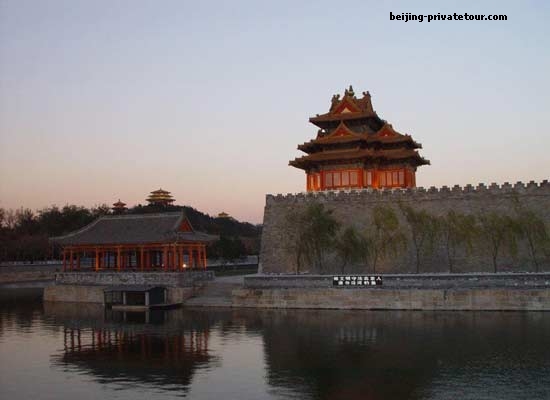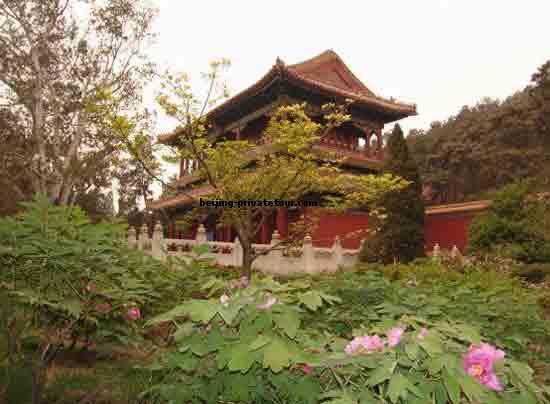Jingshan Park is a public park covering 23 hectares (57 acres) immediately north of the Forbidden City in the Imperial City area of Beijing, China. The focal point is the artificial hill Jingshan, literally "Prospect Hill". Formerly a private imperial garden attached to the grounds of the Forbidden City, the grounds were opened to the public in 1928. The park was formally established in 1949. It is listed as a Key State Park and is administratively part of both Xicheng and Dongcheng districts in downtown Beijing.
The best view of Beijing is from the Pavilion of Everlasting Spring (Wanchun-ting) perched on top of the middle peak, which used to be the highest point in the city. Northwards, one can see the Drum and Bell Towers, a traditional feature of old Chinese cities. To the south, the golden roofs of the Imperial Palace can be seen stretching into the distance.
This park along the North edge of the Forbidden City is well-maintained and quite beautiful with 3 large temples on the hill. From the top of the hill, the views overlooking the Forbidden City are wonderful! Each morning the park fills with middle-aged and older Chinese who gather in groups to sing the revolutionary songs of their youth, play the traditional two-stringed erhu or practice the slow, graceful movements of tai chi. Welcome to have a relaxing Beijing tour of Jingshan Park!
Opening Hours:
April to October: 06:00 - 21:00 (ticket sales stopped at 20:30)
November to next March: 06:30 – 20:00 (ticket sales stopped at 19:30)
Admission Fee: CNY 2 (Fee of exhibitions is not included)
Transportation:
By Bus:
Take bus 5 or 58 and get off at Jingshan Houjie Station or Xibanqiao Station.
Take bus 101, 103, 109, 685 and get off at Gu Gong Station.
Take bus 111, 124 or 58 and get off at Jingshan Dongmen.
By Subway:
Take Subway Line 5 to Dongsi Station. Get out from Exit C and then find bus 101 to Gu Gong (Forbidden City) Station. It is opposite to the north gate of the Forbbiden City.







